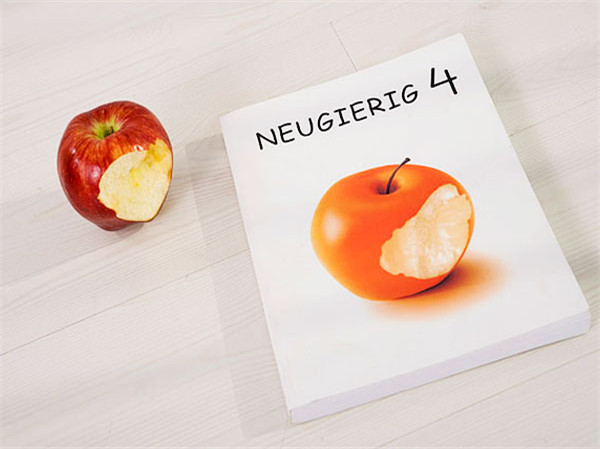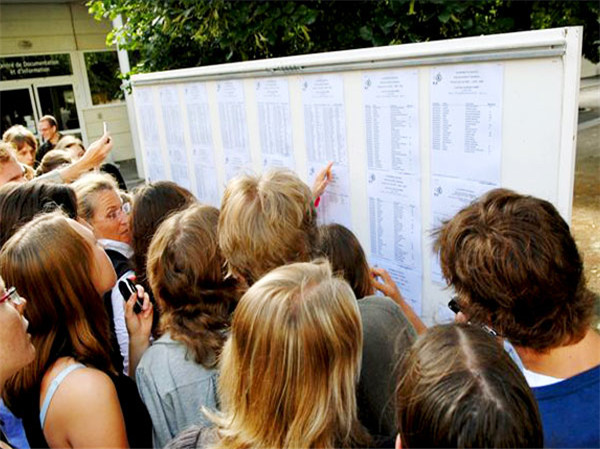现在大家在进行托福备考时官方真题Official托福模考软件相信是大家用的最多的工具了,对于托福成绩的提升是非常有帮助的。托福听力可以说是整个托福考试当中比较重要的一个部分,如何利用现有资料官方真题Official模考软件来提升大家的托福成绩呢?今天小编在这里整理了官方真题Official4托福听力Lecture1文本+题目+答案解析来分享给大家,希望对大家托福听力备考有帮助。

官方真题Official4托福听力Lecture1原文文本
Narrator: Listen to part of a lecture in a biology class. The class is discussing animal behavior.
Professor: Ok, the next kind of animal behavior I want to talk about might be familiar to you. You may have seen, for example, a bird that’s in the middle of a mating ritual, and suddenly it stops and preens, you know, takes a few moments to straighten its feathers, and then returns to the mating ritual. This kind of behavior, this doing something that seems completely out of place, is what we call a ‘Displacement Activity’.
Displacement activities are activities that animal’s engaging in when they have conflicting drives. If we take our example from a minute ago, if the bird is afraid of its mate, it’s conflicted. It wants to mate but it’s also afraid and wants to run away. So, instead, it starts grooming itself. So, the displacement activity, the grooming, the straightening of its feathers, seems to be an irrelevant behavior. So, what do you think another example of a displacement activity might be?
Karl: How about an animal that, um, instead of fighting its enemy or running away, it attacks a plant or a bush?
Professor: That’s really good suggestion, Karl. But that’s called ‘redirecting’. The animal is redirecting its behavior to another object, in this case, the plant or the bush. But that’s not an irrelevant or inappropriate behavior. The behavior makes sense. It’s appropriate under the circumstances. But what doesn’t make sense is the object the behavior‘s directed towards. Ok, who else? Carol?
Carol: I think I read in another class about an experiment where an object that the animal was afraid of was put next to its food – next to the animal’s food. And the animal, it was conflicted between confronting the object and eating the food, so instead, it just fell asleep. Like that?
Professor: That’s exactly what I mean. Displacement occurs because the animal’s got two conflicting drives – two competing urges, in this case, fear and hunger. And what happens is, they inhibit each other, they cancel each other out in a way, and a third seemingly irrelevant behavior surfaces through a process that we call ‘Disinhibition’. Now in disinhibition, the basic idea is that two drives that seem to inhibit, to hold back, a third drive.
Or, well, they’re getting in a way of each other in a… in a conflict situation and somehow lose control, lose their inhibiting effect on that third behavior, which means that the third drive surfaces, it’s expressed in the animal’s behavior. Now, these displacement activities can include feeding, drinking, grooming, even sleeping. These are what we call ‘Comfort Behavior’. So why do you think displacement activities are so often comfort behaviors, such as grooming?
Karl: Maybe because it’s easy for them to do? I mean, grooming is like one of the most accessible things an animal can do. It’s something they do all the time, and they have the stimulus right there on the outside of their bodies in order to do the grooming, or if food is right in front of them. Basically, they don’t have to think very much about those behaviors.
Carol: Professor, isn’t it possible that animals groom because they’ve got messed up a little from fighting or mating? I mean if a bird’s feathers get ruffled or an animal’s fur, maybe it’s not so strange for them to stop and tidy themselves up at that point.
Professor: That’s another possible reason although it doesn’t necessarily explain other behaviors such as eating, drinking or sleeping. What’s interesting is that studies have been done that suggest that the animal’s environment may play a part in determining what kind of behavior it displays.
For example, there’s a bird, the ‘wood thrush’, anyway, when the ‘wood thrush’ is in an attack-escape conflict, that is, it’s caught between the two urges to escape from or to attack an enemy, if it’s sitting on a horizontal branch, it’ll wipe its beak on its perch. If it’s sitting on a verticalbranch, it’ll groom its breast feathers. The immediate environment of the bird, its immediate, um, its relationship to its immediate environment seems to play a part in which behavior will display.
查看官方真题Official4托福听力Lecture1的题目请进入下一页→→→
相关推荐
-
【官方真题Official托福阅读】官方真题Official3托福阅读词汇真题练习——pales&significance
2015-11-19![【官方真题Official托福阅读】官方真题Official3托福阅读词汇真题练习——pales&significance]()
-
【托福听力备考】官方真题Official听力高频词汇——文学讲座学科词汇汇总
2015-11-06![【托福听力备考】官方真题Official听力高频词汇——文学讲座学科词汇汇总]()
-
托福到底能考多少分?19年必练真题告诉你答案
APP专享![托福到底能考多少分?19年必练真题告诉你答案]()
-
【官方真题Official托福阅读】官方真题Official3托福阅读词汇真题练习——ensuing&initial
2015-11-19![【官方真题Official托福阅读】官方真题Official3托福阅读词汇真题练习——ensuing&initial]()
-
【官方真题Official托福阅读】官方真题Official3托福阅读词汇真题练习——arduous&difficult
2015-11-19![【官方真题Official托福阅读】官方真题Official3托福阅读词汇真题练习——arduous&difficult]()
-
【官方真题Official托福阅读】官方真题Official3托福阅读词汇真题练习——guarantee&ensure
2015-11-19![【官方真题Official托福阅读】官方真题Official3托福阅读词汇真题练习——guarantee&ensure]()
-
【官方真题Official托福模考】官方真题Official4托福阅读词汇真题练习 adjacent&nearby
2015-12-04![【官方真题Official托福模考】官方真题Official4托福阅读词汇真题练习 adjacent&nearby]()
-
官方真题Official4托福阅读词汇真题练习——rebound&decline
2015-12-04![官方真题Official4托福阅读词汇真题练习——rebound&decline]()
-
官方真题Official5托福阅读词汇真题练习——promote&complicate
2015-12-09![官方真题Official5托福阅读词汇真题练习——promote&complicate]()
-
【托福阅读备考】官方真题Official1托福阅读词汇真题练习——plugged&washed
2015-11-09![【托福阅读备考】官方真题Official1托福阅读词汇真题练习——plugged&washed]()
-
【官方真题Official托福阅读】官方真题Official3托福阅读词汇真题练习——devised&suggested
2015-11-19![【官方真题Official托福阅读】官方真题Official3托福阅读词汇真题练习——devised&suggested]()
-
【官方真题Official托福阅读】官方真题Official3托福阅读词汇真题练习——particular&final
2015-11-19![【官方真题Official托福阅读】官方真题Official3托福阅读词汇真题练习——particular&final]()
-
【官方真题Official托福阅读】官方真题Official3托福阅读词汇真题练习——integral&variable
2015-11-19![【官方真题Official托福阅读】官方真题Official3托福阅读词汇真题练习——integral&variable]()
-
【小站推荐】官方原题Official模考软件之考托模考测试题C1
2014-05-04![【小站推荐】官方原题Official模考软件之考托模考测试题C1]()
-
官方真题Official8托福阅读词汇真题练习——disruption&exhaustion
2015-12-18![官方真题Official8托福阅读词汇真题练习——disruption&exhaustion]()
-
【托福阅读备考】官方真题Official1托福阅读词汇真题练习——autonomous&artistic
2015-11-09![【托福阅读备考】官方真题Official1托福阅读词汇真题练习——autonomous&artistic]()
-
【托福听力备考】官方真题Official听力高频词汇——歌剧讲座学科词汇汇总
2015-11-06![【托福听力备考】官方真题Official听力高频词汇——歌剧讲座学科词汇汇总]()
-
官方真题Official5托福阅读词汇真题练习——overwhelm&powerful
2015-12-09![官方真题Official5托福阅读词汇真题练习——overwhelm&powerful]()
-
【官方真题Official托福阅读】官方真题Official3托福阅读词汇真题练习——unprecedented&virtually
2015-11-19![【官方真题Official托福阅读】官方真题Official3托福阅读词汇真题练习——unprecedented&virtually]()
-
【官方真题Official托福阅读】官方真题Official3托福阅读词汇真题练习——inevitable&final
2015-11-19![【官方真题Official托福阅读】官方真题Official3托福阅读词汇真题练习——inevitable&final]()
-
托福写作批改:[综合+独立][官方真题Official19]高分作文推荐
2015-10-23![托福写作批改:[综合+独立][官方真题Official19]高分作文推荐]()
定制专属课程规划
领取成功
添加助教,定制你的专属课程规划

每日提分任务
专业提分资料
全程督学答疑























![托福写作批改:[综合+独立][官方真题Official19]高分作文推荐](http://www-static.zhan.com/uploadfile/images/auth/crop/13733499.jpg)
